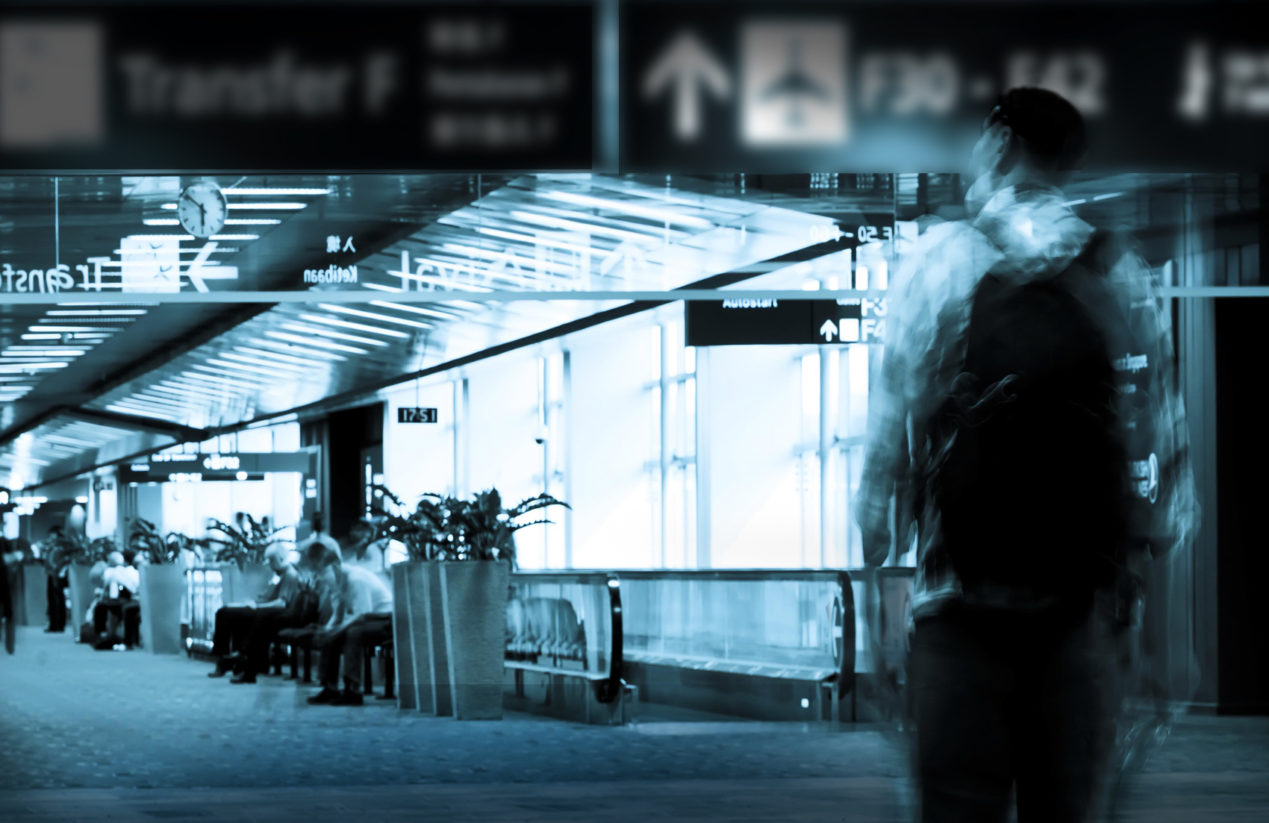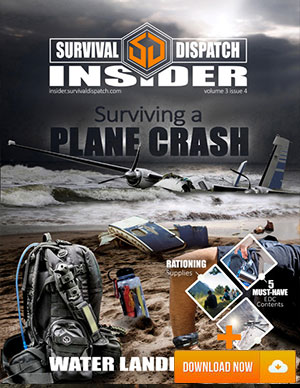SDN has moved again!
Subscribe to our RUMBLE channel

A lot of people often ask what they can carry on a plane when traveling. It’s far easier to discuss what you can’t carry, and we all know what that is. From the standpoint of survival gear, flying eliminates firearms and blades of any kind in a carry on (both of these items can be checked). But that’s it. And while a blade is a primary tool everyone should have, we’ll have to find other ways of finding a cutting edge.
Food and Water
With these two primary restrictions in place we can still assemble a very useful kit to deal with our needs should something happen. You can carry food on a plane, so there isn’t a real issue there. Water cannot be carried through security. Instead, have yourself a metal water bottle and fill it from one of the stations most airports have for this very purpose now. Add in a metal cup, and you’re already on your way to taking care of your water needs.
A filter or chemical tabs are fine on a plane as well. Now we have a way to treat water and transport it. You can also hit up one of the overpriced stores behind security and add some snacks, energy bars and that sort of thing to your pack. Food and water are now covered. This won’t sustain you long term, only for a short emergency, like your flight being delayed or canceled altogether and you find yourself spending days in an airport but, with it has the versatility to deal with most any type of emergency.
Shelter
A tarp, sleeping bag, and cordage are all fine to carry as well. With these items, we’ve just taken care of our shelter needs. And again, should you find yourself stranded in an airport you can make yourself a little more comfortable. These items will also serve you well should you find yourself in a real survival situation.
Flashlight
A flashlight is one thing I think every person should carry. I routinely carry a Surefire Tactician through security in airports. After all, it’s only a flashlight. However, in a pinch, it can become an impact weapon. The primary reason I carry one is that in the event a plane I was on went down and I survived, it will probably be dark and smoky, and it would come in handy finding a way out. However, it could also be very brightly lit from flames (dress accordingly). Drop it into your bag when going through security. It’ll just prevent uncomfortable questions.
Fire
Fire isn’t hard to deal with. Not that you’re likely to need one in an airport, but we’re talking about having some kit with us for any eventuality. Bic lighters are perfectly acceptable on flights, as well as ferro rods. The thing to keep in mind is you cannot travel with any sort of a butane torch style lighter on a flight. I have no idea what the reasoning is behind this, but that’s the rule. So, we can take care of our fire needs with at least two methods that we can carry right onto a plane.
Medical
First aid kits are also fine. Just make sure there’s no scalpel blades or scissors. I find the scissor thing to be incredibly ridiculous, but common sense seldom enters these decisions. But you can carry a med pack, be it trauma, boo boo kit or both without issue. Now we have our first aid needs covered as well.
This brings us to, food, water, shelter, fire and medical with items we can walk right through security with.
Remember to get creative. You may have special needs not covered here. There is almost certainly a solution to any problem you may encounter. Overcoming it may mean visiting the TSA website and going over the rules and finding workarounds. But there is no reason you should have to travel unequipped. A little effort and imagination will allow you to prepare a perfectly legal selection of gear to travel with.
Comms
One more item I’ll add here is a small shortwave AM/FM radio with batteries. Maybe even something like a Goal Zero to keep batteries charged. This will allow you to stay informed should something happen. And while I know we all carry a phone today, having another source for information is always advisable. Remember, two is one, and one is none.
Surviving a Plane Crash
In our modern world, air travel is now commonly undertaken with no more thought than that of stepping onto a bus – except no one rummages through your pockets, takes X-rays of your person and possessions and treats you as a criminal. But I digress. Around eight million people fly commercial flights every day, and that’s not taking into account private planes or military aircraft. Think about that for a minute. That’s like the entire populations of LA, Chicago, and San Antonio getting on planes.
And nearly all of them do so with no more planning or thought than going to work on a typical day. While air travel is the safest form of long-distance travel, accidents do happen. We’re watching the investigations of a couple at this very moment. One was an Amazon transport, and the other was the newly infamous Boeing 737 Max. Fortunately for the former, only the crew were aboard, or the loss of life would be far worse.
Preparedness for the Unexpected
With the thought in mind that accidents can and do occur, should we not at least think about them? I am amazed every time I have to fly. Sitting at the gate waiting for the most enjoyable boarding process to begin, I people watch. The ones that impact me the most are the young girls that show up in shorts and flip-flops wearing sleeveless shirts. Or the small child that mom and dad got up at the last minute to catch their flight and the child is still in that cute pink onesie.
None of these people have given a moment’s thought to having to wade through burning jet fuel to get out of the plane that is probably upside down. Their carry-on luggage probably has little use to them should they be stranded, injured, and lost. Do they have any means of starting a fire? Do they have any shelter material with them? Any way to signal or even cordage to use? While much of this can be salvaged from a downed airliner, it may also be on fire or scattered over countless miles of impassable terrain.
Get the Ultimate Guide on Plane Crash Survival
Even those of us who plan and prepare will throw hands up and say, “Oh well, the TSA won’t let me take anything,” and board our flight. In this edition of the Insider, we’re going to provide you some valuable information that, while highly unlikely, may one day save your life. That’s what we do here at Survival Dispatch, offer you the information to make a difference in a moment of crisis and surviving a plane crash is one hell of a crisis!
You can sign up for the Survival Dispatch Insider using the link below and download the 82 page Surviving a Plane Crash PDF here.
Become a Survival Dispatch Insider …
We bring together survival enthusiasts and preppers to share skills and knowledge, so you can enhance your preparedness for emergencies and ensure the safety of you and your community.
The Results You’ll Get …
Our community, courses, and memberships are pretty special. We focus on the ways it will make a huge difference in your life.
Here are a few of the things you’ll be able to do as a member of Survival Dispatch Insider …
1) Improve your emergency preparedness by learning survival skills and strategies from experienced preppers.
2) Build lasting connections with like-minded individuals that share your passion for safety and readiness.
3) Access a wealth of knowledge and resources to assist in protecting you and your community during unexpected situations.
Click HERE to get started.
=====

